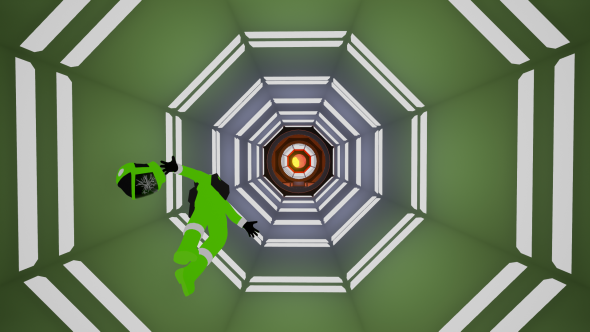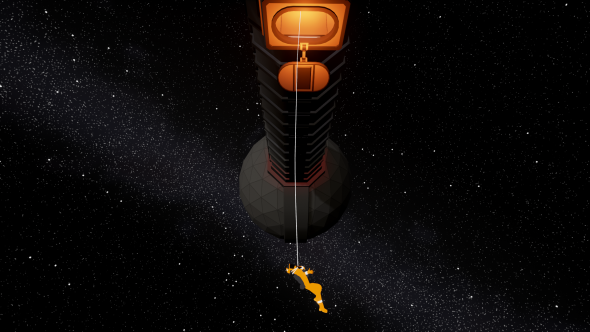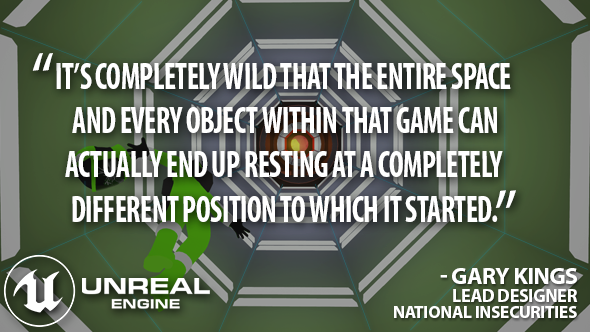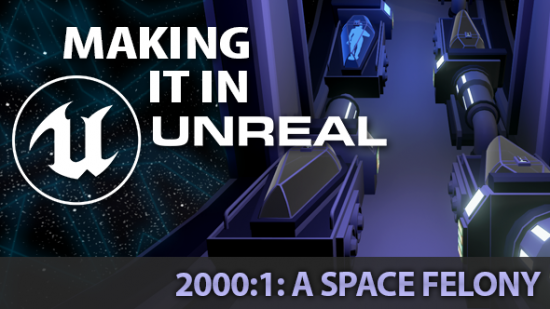Sometimes the success story is not the passion project you slave over, but the throwaway game you put together in your spare time. Such is the case for The National Insecurities team, who formed around a university prototype called The Old Gods Are Dead, which they spent almost an entire year trying to fund.
Related: the best indie games on PC.
After Brexit spooked the financiers and foiled a potential deal, lead designer Gary Kings and his team were in need of a confidence boost. So they threw together an irreverent murder mystery prototype game in just six weeks. One Humble Original deal and several months later, 2000:1: A Space Felony has become their flagship title. Here are its best tricks.
Ground control
2000:1: A Space Felony belongs to a comedic, fourth-wall breaking crop of games coming out of the UK in recent years. That lineage is most apparent in its storytelling technique. You, an investigator aboard an interplanetary spacecraft that has fallen silent, explore the ship in first-person and take photographic evidence with your camera. But with each flash of the camera, the game cuts away to a different perspective entirely – taking you to a dark room where Ground Control narrates your actions, as if they have already taken place.
It sounds, frankly, a bit mad – something that should not work, and for a long time it didn’t.
“That was a really difficult thing to come up with. We basically knew that we wanted this game to be fully voice-acted, and we didn’t want it to be text-based,” Kings says. “Do we just have you narrate it? Someone in your head? All I knew was that somewhere in there, I wanted this imagery of the guy sat across from you in a room.”
Rapidly swapping between perspectives is something of a no-no in first-person games, however – with good reason.
“Those hard cuts were actually annoying, distracting, and confusing for a while,” Kings remembers. “We had to iterate on the size of Ground Control and how much he was obstructing that screen behind him. It is completely mad, and it was a bizarre risk, but it did fix a lot of problems for us with the entire narrative framing of the game.”
MAL

The most visually-striking aspect of 2000:1: A Space Felony is MAL, the ship AI whose account you are there to challenge. MAL is no terminal or monitor, but a domed room with a single, roving pupil.
“It’s like you’re in an eyeball, that’s looking inside towards you instead of looking out,” Kings explains. “And then we ended up accidentally creating this room made out of triangles.”
MAL’s room is made up of a honeycomb of triangular panes, like the inside of a golf ball. And its eye is simply a light shone from behind those panes. But through a technical quirk, there is no gradient to MAL’s light – each plane lights up as a single, whole colour. This creates a beautiful, dynamic mosaic effect that was completely unplanned.
Finally, programmer Lauren Filby added the finishing touch – every few seconds, MAL blinks, her light flattening and opening up again. The AI remains an incredibly simple bit of technical trickery.
“That room in which MAL exists is the most beautiful part of the game, but also runs the best,” Kings says. “Which is very strange.”
Centrifugal fun

No game with 2000:1’s title would be complete without a centrifuge – the iconic space station wheel, beloved of engineers and science-fiction writers, that rotates on its axis to provide an area of artificial gravity within. NASA have never attempted one, and even building a centrifuge in a game comes with its own unique challenges.
“We were like, how the hell are we going to do that?” Kings recalls. “You’re walking around on a wheel that’s spinning. We were looking at a thread online of how to do it, and there were these people who knew [Unreal Engine 4] Blueprints and a whole bunch of C++ discussing it over the course of six months. And they got close, but didn’t quite get what we needed.”
The National Insecurities team resigned themselves to a wheel that did not spin – rendering its interior a zero gravity environment, like the rest of the game. But then, two days later, Filby declared, “I’ve done it!”

“Because this is what she does,” Kings explains. “She does things that most programmers wouldn’t expect to be possible in Blueprint.”
The biggest challenge was building a wheel that clearly spun when seen from the outside, but was also fit for walking around inside. And the answer was a kind of illusion: the moment you enter 2000:1’s wheel, it stops spinning – and the rest of the world begins spinning around it.
“It’s completely wild that the entire space and every object within that game can actually end up resting at a completely different position to which it started,” Kings says. “But you wouldn’t notice it.”
2000:1 is available to buyon Itch.io.Unreal Engine 4 is now free.
In this sponsored series, we’re looking at how game developers are taking advantage of Unreal Engine 4 to create a new generation of PC games. With thanks to Epic Games and National Insecurities.
